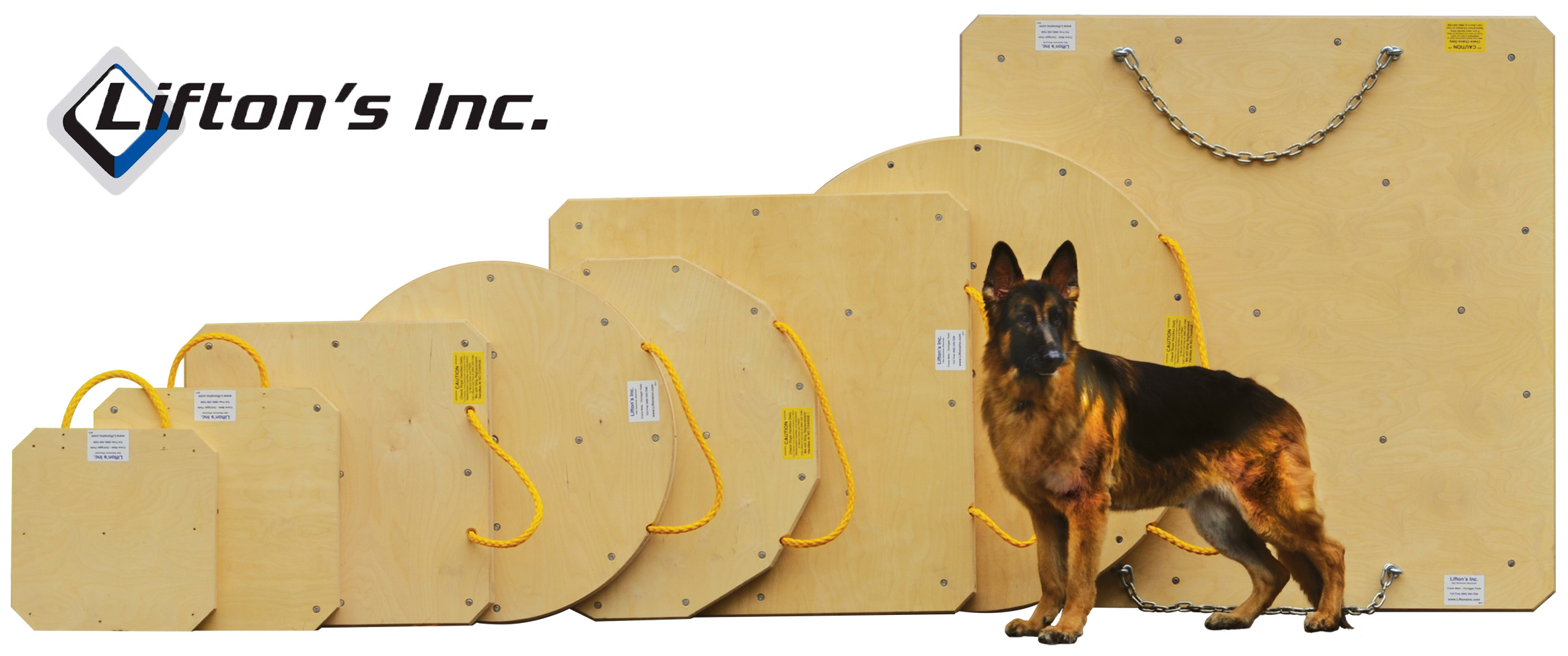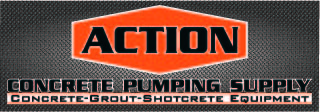| JohnThomas | 11-19-2007 | comment profile send pm notify |
|
We are doing a hospitol job, they want us to pour 35ft coloums. They want us to start at the bottom and pour up. What could we hang off our booms that would be safe and 35 ft long.
|
||
| concrete animal | 11-19-2007 | reply profile send pm notify |
|
Years ago i worked on a water plant (pre-pumping years) we had funnels with soft rubber hose attached (like you see the trash pumps on jobs pumping out wet areas atached there was a series of these with different length hose attached. as you filled you changed to one with shorter hose. Some guys try PVC for the hose?? sure others will have more & better info for you. Pea rock or big rock. how much room do you have inside. If there is a snap tie across the center preventing your droping down the center somebody needs to rethink the process. In short involve the contractor in the process of finding the solution, when i ran jobs I know I was guilty of calling subs to see if they would come up with solutions that were my response ability to find, Isn't that what go's on here? Yes, I know contractors are looking for the pumpers that solve there problems and make like easy for them so you can't tell him it's his to figure out. |
||
| Many | 11-19-2007 | reply profile send pm notify |
|
John,I believe you will find 20' max as a good guidline.Anything beyond that would require crane assist.As for pumping bottom up it is pretty much as an industry standard.Some engineers spec max 10' drop on concrete (segrigation) and seen some as little as 4' (Corps jobs).Yes they can also use tremmies,which then all you would need is tip hose.Tweeking a tip section is not a good way to finsh a day.One bit of reenforcment knowledge to counter your contracto with is in manual for max weight of end of boom.It's hard for him to go against it and put his planning a little different perspective.Just a thought,good luck |
||
| Bob | 11-19-2007 | reply profile send pm notify |
|
JT All these guys 'talk' about pouring from the bottom up; why don't they do it? A shut-off valve, welded or bolted to the bottom of the form is really the way to go. Good, flowable concrete, pumped from the bottom will give your customer an outstanding finish on his columns. Job will require some effort on the customer's part which will pay off for him when they strip the columns and see the finished product. + the load on the tip is ZERO. You are never letting the concrete free-fall and rebar encapsulation is as good as it gets; there will be NO honeycombs. Just because we have booms does not mean that we always need to approach the job from the top. ;~) |
||
| Bob | 11-19-2007 | reply profile send pm notify |
|
(just some out loud thinking here) It does add expense to the job. The shutoffs on the column cost the pump company nothing. As an offset to the contractor; the job can be done with a trailer pump and 3" hose. Most forming systems are vastly underrated as far as that goes. This procedure used to be--- not common, but it was not uncommon (much). We pumpers have put the burden of overloading our booms on ourselves. It is sort of like throwing a frog in cold water and then turning on the heat. The frog (pumper) does not feel the gradual rise in temp- or see the slow trend to overloading his boom. The shutoffs are easy to make; and with all of those columns it is not out of the question to take this approach. How many column forms are there? |
||
| Mudslinger | 11-19-2007 | reply profile send pm notify |
|
The "way" to go is SSC (self consolidating concrete). Seperation is not an issue with this material. It's readily available, has high strength, and compared to "normal"concrete, might have some cost benefits! |
||
| Bob | 11-19-2007 | reply profile send pm notify |
|
You are right! To get the job done correctly the mix will need to flow while still keeping the aggregate in suspension. ;~) |
||
| concrete animal | 11-19-2007 | reply profile send pm notify |
|
From the bottom up sounds wonderful for us. Fill her up shut valve (by other), relieve pressure- disconect- move. how much uplift will this create on formwork. Concrete at bottom will have about 40 lbs head pressure. |
||
| Bob | 11-19-2007 | reply profile send pm notify |
|
Animal, The pressure is the same whether pumping from the bottom or the top. 35 feet high is 35 feet high. As far as the lift goes... unless I am mistaken (and I sometimes are guilty of that) the form lift would be no greater. All in all it is a simple solution. How many sets of column forms does the contractor plan on using? For our purposes; the fewer the better. 30 would seem to me like a doable number. Interesting problem & good post topic. This is the type of issue that needs to be understood. ANYONE can hang too much gear off of their tip, it takes an operator to execute plan "B". Please keep us posted Bob ;~) |
||
| Bob | 11-19-2007 | reply profile send pm notify |
|
I just dusted off my copy of the bible for pumpers; "Pumping Concrete Techniques and Applications". It does make an issue out of the fact that form uplift is increased when pumping from the bottom. I have been wrong before, but the book has not. my bad ;~) |
||
| eugene | 11-19-2007 | reply profile send pm notify |
|
use two line pumps to be more productive and less stress on one operator. how about two shut off valves, one half way up so the pressure is half. work smart not hard. |
||
| eugene | 11-19-2007 | reply profile send pm notify |
|
hey speedy i thought pressure was 150 LB X 35 FT so you would be 5250 LB per SQ FT at the bottom so that could be a plug right. and going half could reduce a risk. tailer VS high pressure unit. hose or pipe. |
||
| concrete animal | 11-20-2007 | reply profile send pm notify |
|
1.1 LBS Per Sq In. for every foot in height is what i remember from seminar (a.c.p,a,) . dont confuse ponds per square foot and pounds per square inch. yes 1.1 pound per square inch =roughly 150 pound per square foot. |
||
| Bob | 11-20-2007 | reply profile send pm notify |
|
When I was younger and smarter I did not even think about the potential of form lift; we just did it and it worked. BUT, we were not pumping fast; probably because everyone was worried about the forms blowing out... except for the sup't. Perhaps that is why he was in charge. ;~) |
||
| concrete animal | 11-20-2007 | reply profile send pm notify |
|
Keep in mind also you dont want to run out of concrete in the middle of a columb and have to wait on a truck!! So several thing to consider. The shut off valves, is contractor going to remove them couple hours after pour and clean to reuse? |
||
| Bob | 11-20-2007 | reply profile send pm notify |
|
When they strip the forms you hit them a couple of licks, slide and lube the gate and you are good to go. perhaps not quite that easy, but just about |
||
| jd | 11-21-2007 | reply profile send pm notify |
|
ask the contractor how far the mud can fall then hang a 4in trimmie thats a light weight steel and go with super p or polyheide and a 7in slump and be done with it I do this alot |
||
| TOM@CF | 11-21-2007 | reply profile send pm notify |
|
JT, We have been involved in a recent project at the MSP airport with Adolfson & Peterson where they had some column work with SCC. We weren't too sure how the SCC would work with our column shut-off valves either. Customer bought one for a trial pour, it went off without a hitch & they purchased another half dozen or so. I was told that it works like a champ & the column looks great after stripping with minimal clean-up. All the other reasons listed on this site for pumping from the bottom up make perfect sense too. We have a book from the distant past called "Pumping Concrete Techniques & Applications Manual" that has a lot of great information in it about pumping concrete & it's amazing how much is still valid. I have made a PDF of the section about pumping columns from the bottom up & would be happy to forward to anyone who would request it. Just send me an email & I'll attach & return for you. Otherwise some poor bastard will have to call & talk me through posting a PDF on this website (if it's even possible). I'm computer illiterate (in case you haven't figured that out). Tom Johnston 866-652-7810
|
||
| Bob | 11-21-2007 | reply profile send pm notify |
|
Thanks Tommy J. ;~) Everyone that has not seen that information should get the PDF. When you are calculating the weight on the boom (and I know everyone does this before hooking up the gear) you MUST assume that everything that you hang off of your boom will, at some time, be FULL OF CONCRETE. Please add the weight of the POTENTIAL to your calculation. Call your manufacturer and ask him if is within their allowable limits. Just because you have done it doesn't indicate that you should do it. Look - identify - think - plan, to stay in compliance... please, ;~) |
||




















.jpg)
.gif)

.jpg)









.jpg)








